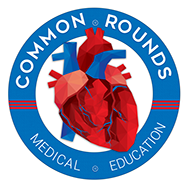Author: Hamed Shahnam
Problem-based Learning (PBL) is a key learning modality/style of many medical schools across Australia and globally. Prior to entering medical school I had very vague ideas about PBLs and its utility in the medical school teaching curricula. Having now worked my way through year 2 of medical school, I think I’ve developed a deeper understanding of the advantages and disadvantages of PBLs. However before we discuss the advantages and disadvantages of PBLs let’s briefly talk about what is involved with this learning modality.
PBLs place a huge emphasis on group learning and thus each group is typically comprised of members with diverse backgrounds (particularly if you are fortunate to enrol into postgraduate medicine). Each session is run by tutors who may or may not be doctors. The tutors occupation is not really relevant as their role is to facilitate discussion and ensure the group remains on task. They often help guide the flow of conversation. At the Australian National University, where I’m studying PBL sessions occur twice weekly. The first session usually starts with a trigger. The trigger is much like patient’s presenting complaint. It could also contain additional information about the patient’s past medical history (but frequently this information is absent).
Once the group has orient themselves around the trigger the fun begins! The first part is to develop questions about interesting points/issues about the case or possible research questions that might further your understanding of the topic. You need develop a problem-statement, which is one or two sentences presenting the key essence of the trigger (imagine sharing rapid information to your senior registrar or consultant during a night-shift). Following the problem-statement you’ll then work as a group to systematically assess potential causes and organ systems that may be involved/associated with the presentation. The ultimate aim of this exercise is to develop your differential diagnosis for the case. We then carry out a full history, where the tutor pretends to be the patient. This helps form a deeper understanding of the patient’s history and helps in cementing your differential diagnosis. In the first session you are also provided with a series of questions (including the ones you’ve developed) to investigate and present to your fellow colleagues in the second session. These questions are essentially your learning objective and often correspond with topics discussed in lectures during the week.
The second session revolves around each group member presenting their topic and discussing specific issues regarding the case. In this session we will also look at results for any physical exams, investigations (ECG, blood tests, radioimaging etc..). The result of the investigations then help confirm your diagnosis. To finish off the PBL case you then develop a management plan including any follow-up appointments. The tutor can then discuss the the overall outcomes to ensure no loose ends remain. So as you can see PBL somewhat reflect an approach to treating patients in real world. They also incorporate learning material within the course and thus are important when preparing for exams. However what are some advantages and disadvantages of PBL modality?
- Working in a group can be fun
- Shared learning and contributing to each others understanding of topic
- Discussing complex ideas as a group
- Fosters team mentality, which is fundamental for the practice of medicine
- Efficient way of learning when the groups are working and the quality of the posts are good
- Having PBL food is good, especially if someone is a great cook
Advantages
Disadvantages
- The quality of the discussion or presentations really depends on your PBL group
- Variations in tutor expertise, knowledge or personality lead to PBLs of varying quality between different groups
- Discussions may sometimes get off track
- Group member personalities may clash (but great opportunity for conflict resolution)
